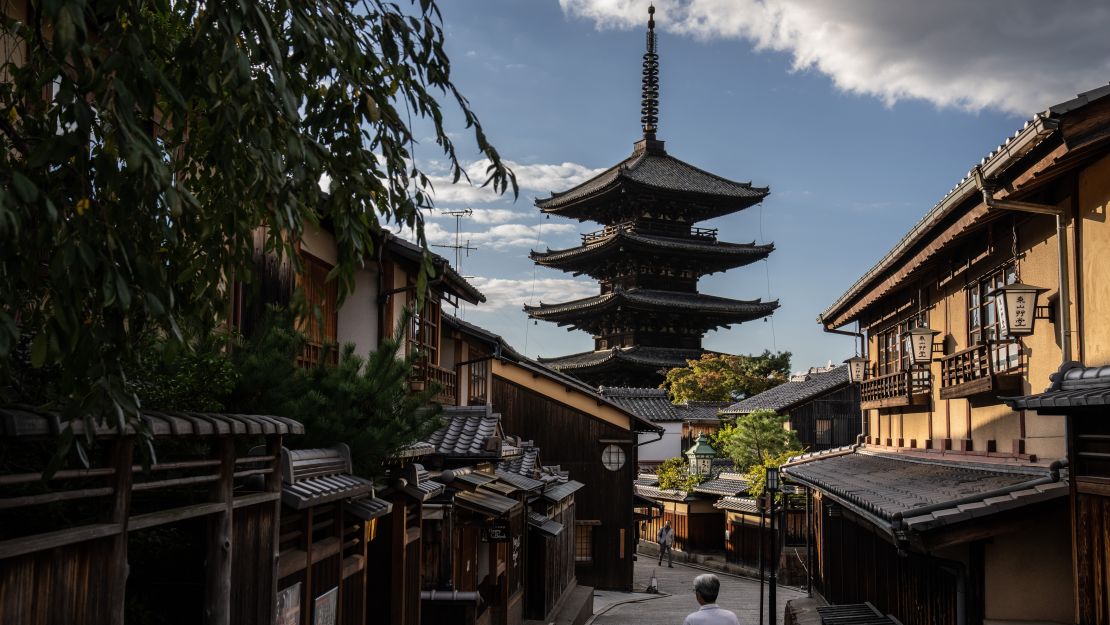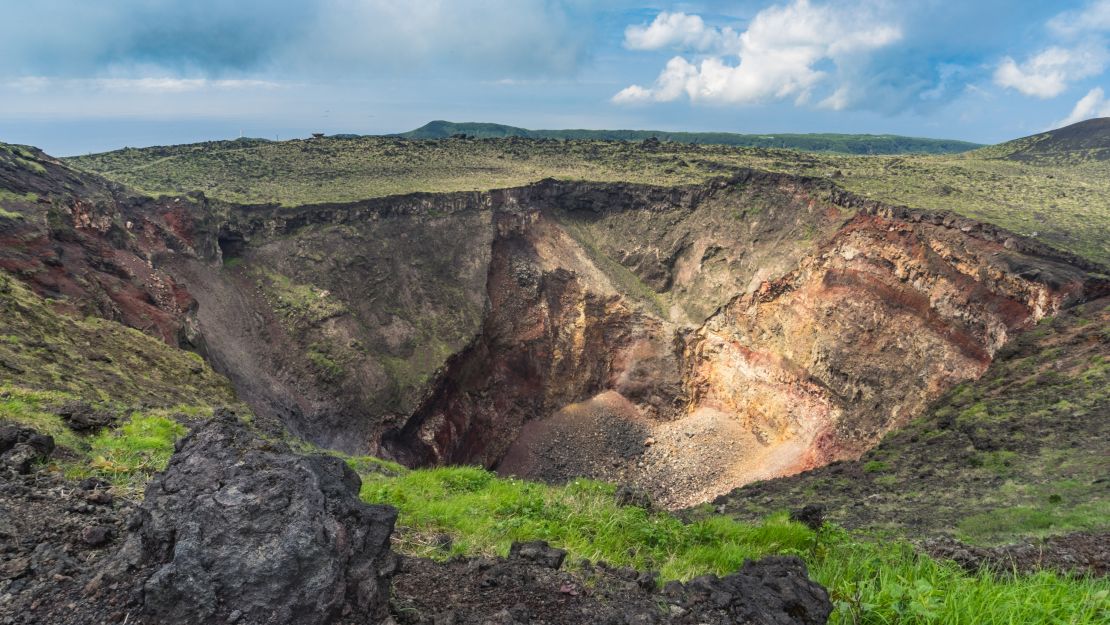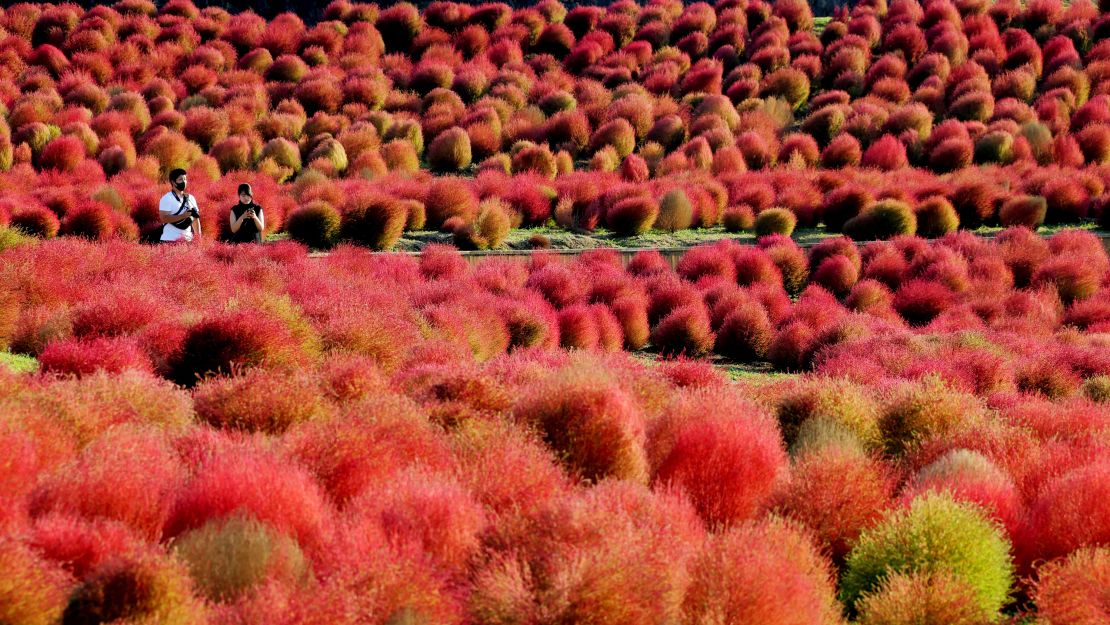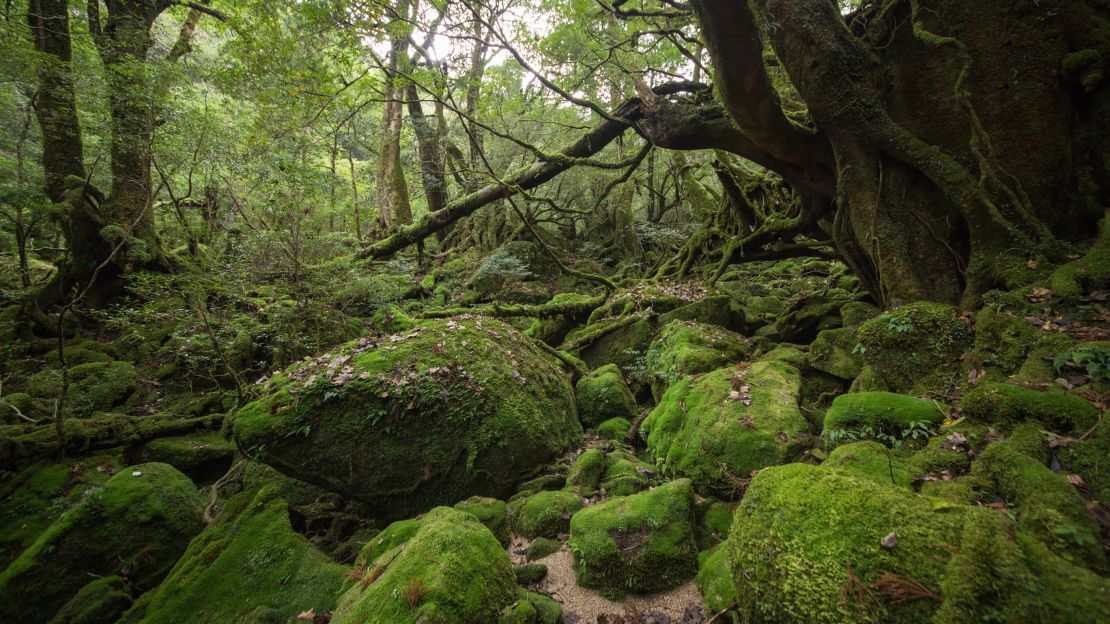Editor’s Note: Sign up for Unlocking the World, CNN Travel’s weekly newsletter. Get news about destinations opening and closing, inspiration for future adventures, plus the latest in aviation, food and drink, where to stay, and other travel developments.
Perhaps surprisingly, fewer than 10% of the 6,852 islands making up the Japanese archipelago are inhabited. But among those 400 or so, travelers are treated to a rich tapestry of natural treasures, deep-seated mysticism, thriving cultural assets and stretches of sprawling urbanity.
Covid restrictions mean that most of us can only dream about visiting them for the time being, but here are 10 of the best to help plan that post-pandemic trip.
Hokkaido
They say the heart of Japan is in the countryside, and in Hokkaido on the archipelago’s northern tip, there is countryside aplenty. Several national parks sprawl across the hinterlands, from the caldera lakes of Akan Mashu to the bear-infested Shiretoko revered by the indigenous Ainu population. Combining these with pit stops at the small villages peppered throughout Hokkaido’s forests and wetlands makes for an epic road trip.
The island’s wintry climes also draw huge numbers during the snow sports season, with resorts like Niseko, Furano and Kurodake home to some of the freshest powder on the planet.
For city living, head to Sapporo, where you can slurp noodles in its steamy “Ramen Alley,” survey snow-kissed Odori Park from the Sapporo TV tower observatory, or drink till the wee hours in the Susukino entertainment district. While you’re here, check out the Sapporo Beer Museum and brewery for steins of lager and jingisukan (“Genghis Khan”) lamb served on hot skillets shaped like the Mongol warlord’s headdress.
Honshu

If the heart of Japan is in the countryside, then the main island Honshu is its thumping pacemaker. It is a region still embodied by the bubbling post-war economy; an era of materialism, decadence and massive urban expansion.
Most travelers will fly into and out of Tokyo, and there is no better place to bookend your sojourn. Whether it’s the electrified Shibuya crossing, the hipster subcultures of Shimokitazawa, the Kabuki-cho entertainment district, pop culture hub Akihabara, or the city’s 200-plus Michelin-starred restaurants. Mt. Fuji is a couple hours from the capital by train, perfect for day trippers or overnight hikers.
Other major cities occupy stretches of Honshu further west. These include Kyoto, the former capital and a treasure of the world with 17 UNESCO World Heritage Sites; Osaka, the gritty antidote to the more pretentious capital where gluttony and indulgence are par for the course, and Hiroshima, a vibrant city that has risen from the ashes of the atomic bomb atrocities of World War II.
Sado
Sado Island, Japan’s sixth largest, sits off the northwestern coast of Honshu in Niigata Prefecture. Though excavated pottery artifacts indicate that Sado has been populated since the Jomon period (14,000-300 BCE), it has spent much of the proceeding era as an island of exile and imprisonment.
Among the most famous exiles sent to the remote island were the poet Hozumi no Asomi Oyu (8th century), who criticized the then-emperor, and Emperor Juntoku (13th century), for his role in fomenting war. The latter’s remains were cremated at the Mano Goryo Mausoleum, which is open to the public today.
Sado also housed convicts in the Aikawa Detention House between 1954 and 1972. You can explore this eerie wooden building contrasting with the backdrop of its lush surroundings.
Alternatively, if you’re in the mood for a trek, head for the rugged rock formations of Senkaku Bay, or to the grassy slopes of Mt. Kongo and Mt. Shiritate.
Naoshima
Thanks to the checkbook of billionaire Soichiro Fukutake and the vision of architect Tadao Ando in the 1980s, Naoshima went from a provincial land of disrepair to a prized open-air contemporary art museum in a matter of years.
Pop art trailblazer Yayoi Kusama’s kabocha (pumpkins) are among the top works on the island; one protruding from a pier on the south coast (currently under repair); the other, red and black, submerged in concrete by the western shores.
The Chichu Art Museum, created by “The King of Concrete,” Tadao Ando, celebrates the interplay between space, light and shadow (it also houses work by Claude Monet and Walter De Maria). For local art icons, head to the Benesse House Museum, with pieces by Shinro Ohtake, Hiroshi Sugimoto, and Yukinori Yanagi. While the Museum Restaurant Issen is the go-to spot for elegant kaiseki (seasonal cuisine) in view of Andy Warhol originals.
Oshima

There are few islands in the world like Oshima, Japan’s only island leprosarium – an island inhabited almost entirely by victims of leprosy.
Lying off the coast of Takamastu City, Oshima owes its history to Japan’s much maligned and since disbanded policy of leper segregation (which, unbelievably, ran until 1996); the leprosarium still exists, however, simply because the remaining inhabitants have nowhere else to go.
Oshima’s undisturbed sandy shores and towering forests choked with shrubbery are juxtaposed against the squat, gray buildings which once imprisoned the lepers. To avoid dark tourist voyeurism, it’s recommended only to visit during the Setouchi Trienniale. This festival introduces contemporary artworks to the island every three years, both in commemoration of Oshima’s dark past and in celebration of its renewed freedom.
Aoshima
Japanese folklore and pop culture are littered with reverence for animals, but few have garnered the same cult appeal as cats. Think Hello Kitty (although possibly not actually a cat), robot cat Doraemon, maneki neko (good luck cat dolls), and Natsumi Soseki’s famous POV novel “I Am a Cat.”
On the tiny island of Aoshima, off the coast of Shikoku’s Ehime Prefecture, cats outnumber humans at least six to one – though some estimates say it’s a much greater factor still. As such, the roughly one-mile-long island has long been the object of desire of cat enthusiasts across the country.
That said, there isn’t much to do on Aoshima, other than watch the hundred-plus felines lounge, strut, purr, and occasionally fornicate, their ways around. But if you’re a cat person, that is likely enough.
Shikoku

Shikoku is the smallest of Japan’s four main islands, but is now well and truly on the traveler’s radar.
Iya Valley should be your first stop; a series of steep-sided gorges in Tokushima prefecture introduced to the world by Japanophile author Alex Kerr. In the 1970s, Kerr renovated a thatched-roof house in Tsurui hamlet, called Chiiori, at which visitors can stay and volunteer.
The Buddhist Henro pilgrimage, connecting 88 temples once visited by the monk Kobo Daishi, is another great way to experience Shikoku’s embarrassment of natural riches. This circular(ish) trail traverses 750 miles across all four prefectures on the island and guides pilgrims through forests echoing with birdsong, cobbled mountain passes and bustling coastal cities. It can take several weeks to complete on foot, but completists will be rewarded with purification of mind, body and soul.
Cycling enthusiasts can also embark upon one of Japan’s great two-wheeled road trips from Shikoku. The Shimanami Kaido snakes along the islets and suspension bridges connecting Shikoku and Honshu, never straying far from panoramic views of the Seto Inland Sea.
Kyushu
Kyushu, Japan’s third largest island, is one of vibrant city life juxtaposed with still-smoldering volcanoes.
Fukuoka and Nagasaki sit in the north. The former is a cosmopolitan arts, entertainment and startup hub, and the birthplace of tonkotsu ramen. The latter is a city for history buffs; visited by Jesuit priests in the 1500s, Dutch traders during the Edo period (1603-1868) and an atomic bomb during World War II.
Mt. Aso, a volcano set amid the rolling grasslands of central Kyushu, is surrounded by Japan’s largest caldera; the trail weaving around its outer rim is a road-tripper’s dream. While Kagoshima, a subtropical city in the south, is renowned for its laid back atmosphere, its surfer culture and its love of satsumaimo, the Japanese sweet potato, and shochu (a distilled Japanese spirit).
Yakushima

It’s true that Yakushima served as inspiration for Studio Ghibli’s 1997 animated classic, “Princess Mononoke.” But to think of it in such simplified terms, is to do it a great disservice.
The subtropical and biodiverse island to the south of Kyushu is one of the last stretches of Japan where industrialization has left scarcely a footprint. Yakushima’s primeval forest, smothered in moss, dissected by frothing rivers, and brooded over by ancient yakisugi cedars, is the embodiment of traditional Japanese animist beliefs. The forest isn’t just the abode of the kami (spirits); it is their earthly incarnation.
The UNESCO-protected forest should be the central focus of your journey in Yakushima: hiking to the 7,000-year-old Jomon cedar, surveying its misty valleys from the Taiko-iwa (drum rock), and spying macaques loping among the boscage above.
For guided tours and knowledgeable guides, check out YES! Yakushima.
Okinawa (Main Island)
Once known as the Ryukyu Kingdom, Okinawa was watched with wandering eyes by the imperial powers of Japan and China for centuries, before the former eventually annexed it in the late 1800s. Okinawa today bears the signature of these two cultures, with Buddhist temples, Shinto shrines and garish Chinese iconography dotted across the island.
Its sun-baked setting, adrift in the subtropical Pacific, makes it an ideal summer escape. Head to the sandy shores of Manza Beach for a salty dip and glittering seascape views from nearby Cape Manzamo. The manmade Emerald Beach is one of Okinawa’s more stunning and sits only a stone’s throw from Okinawa’s famous Churaumi Aquarium. While isolated snorkelers’ haunt Sesoko Beach is connected to the main island via a road bridge in the northwest.
Okinawa is also Japan’s number one scuba diving region, thanks to the sea turtles, manta rays, whale sharks, and tropical fish gliding through its deeper waters. Check out Honu Honu divers in capital city Naha, for English dive guides.









